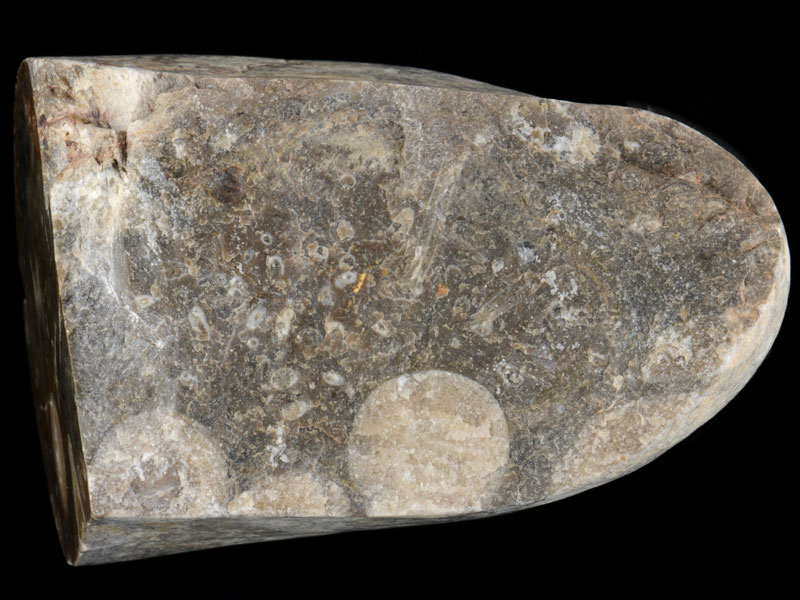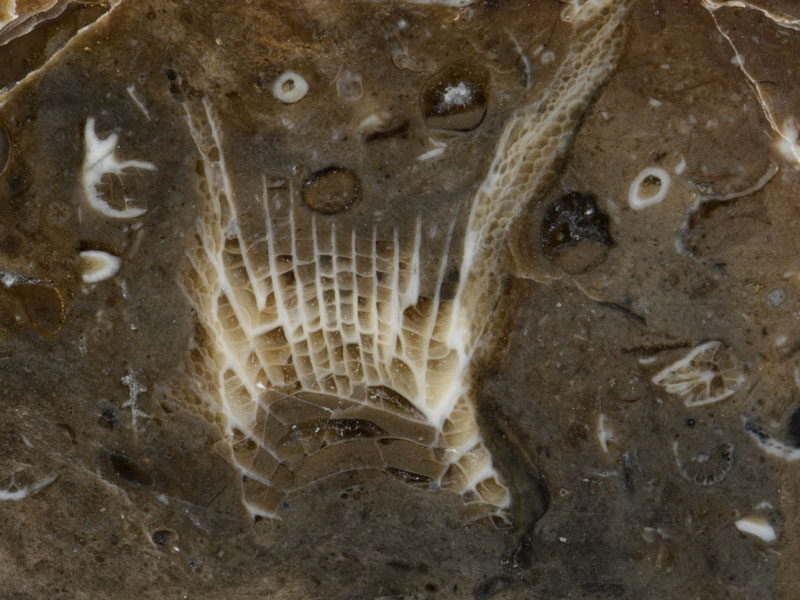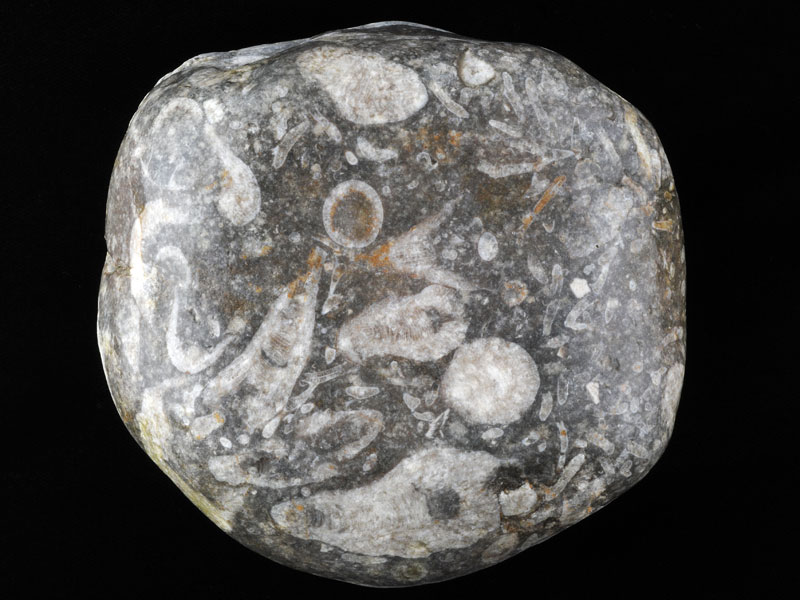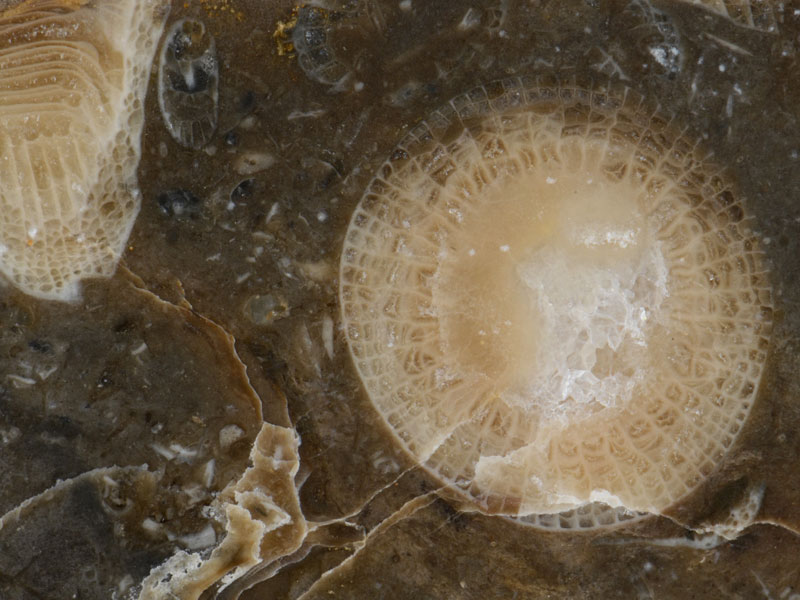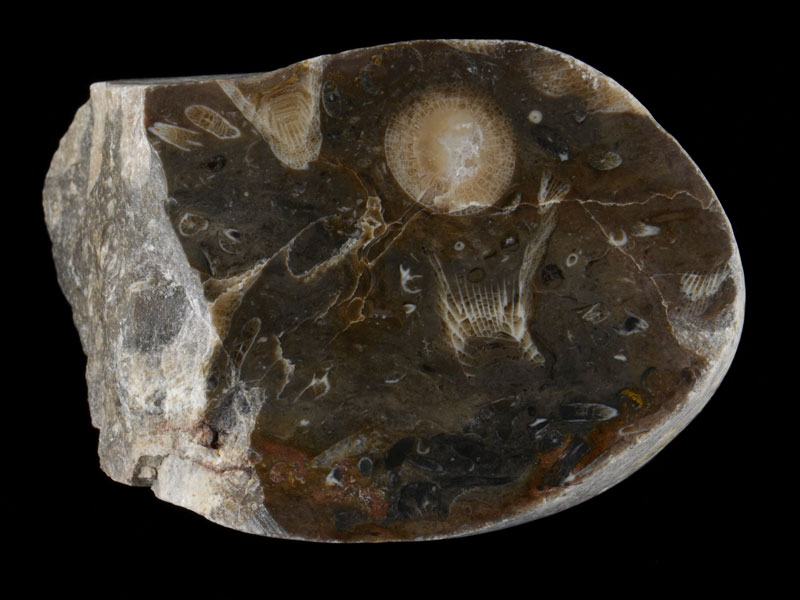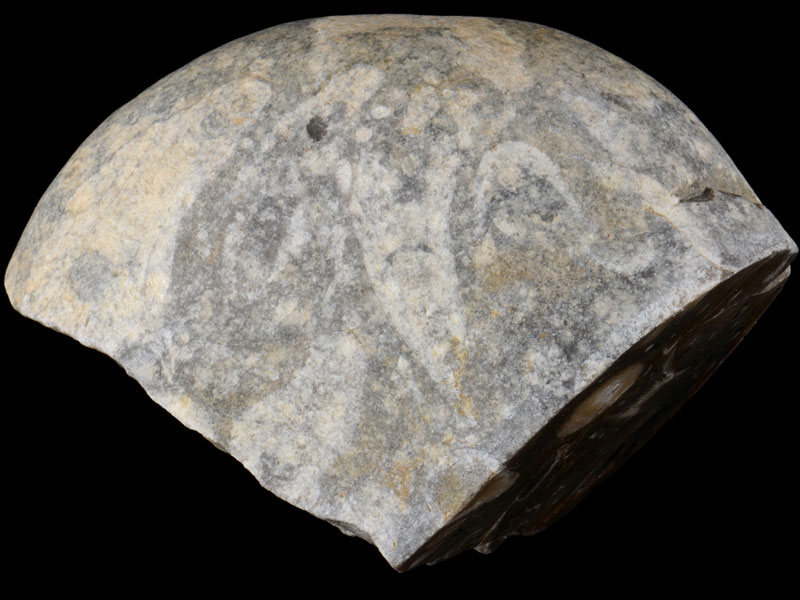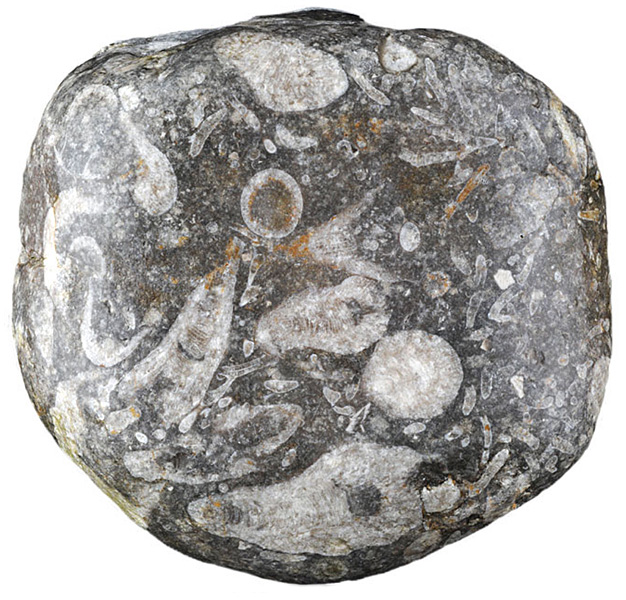
Fact sheet
This Lower Carboniferous limestone comes from the Whitesands and Barns Ness area, South-East of Dunbar, North Berwickshire, Scotland. The rock contains distinctive Koninckophyllum corals and brachiopod shell fragments cemented by a calcium carbonate rich mud known as micrite.
In thin section, the corals are formed of coarse grained sparry calcite and some appear to be linked, note that all the corals in the top left of the section are circular and roughly equidistant from each other indicating they are a life position relative to one another. The larger corals, over 1cm in diameter are variably oriented. Some of the shell and coral fragments are partially filled by fine grained carbonate rich mud, and the remainder of the filling is a sparry calcite. This combination can be used to determine the orientation of the original rock, or ‘way up’, since the mud would have filled the bottom of the cavity and the cement would have filled the upper part. Such structures are known as geopetal indicators.
The United Kingdom Virtual Microscope (UKVM) collection consists of igneous, sedimentary and metamorphic rocks from around the UK.
It is intended as a teaching resource, helping to tell the story of the common rock types and how they form, and reflecting the history of the UK at the margins of the continent of Europe. The collection is a series of teaching sets, for example igneous rocks from the North Atlantic Igneous Province and SW England; high-temperature metamorphic rocks from Scotland and low-temperature metamorphic rocks from Wales; and sedimentary rocks, including English limestones and sandstones.
